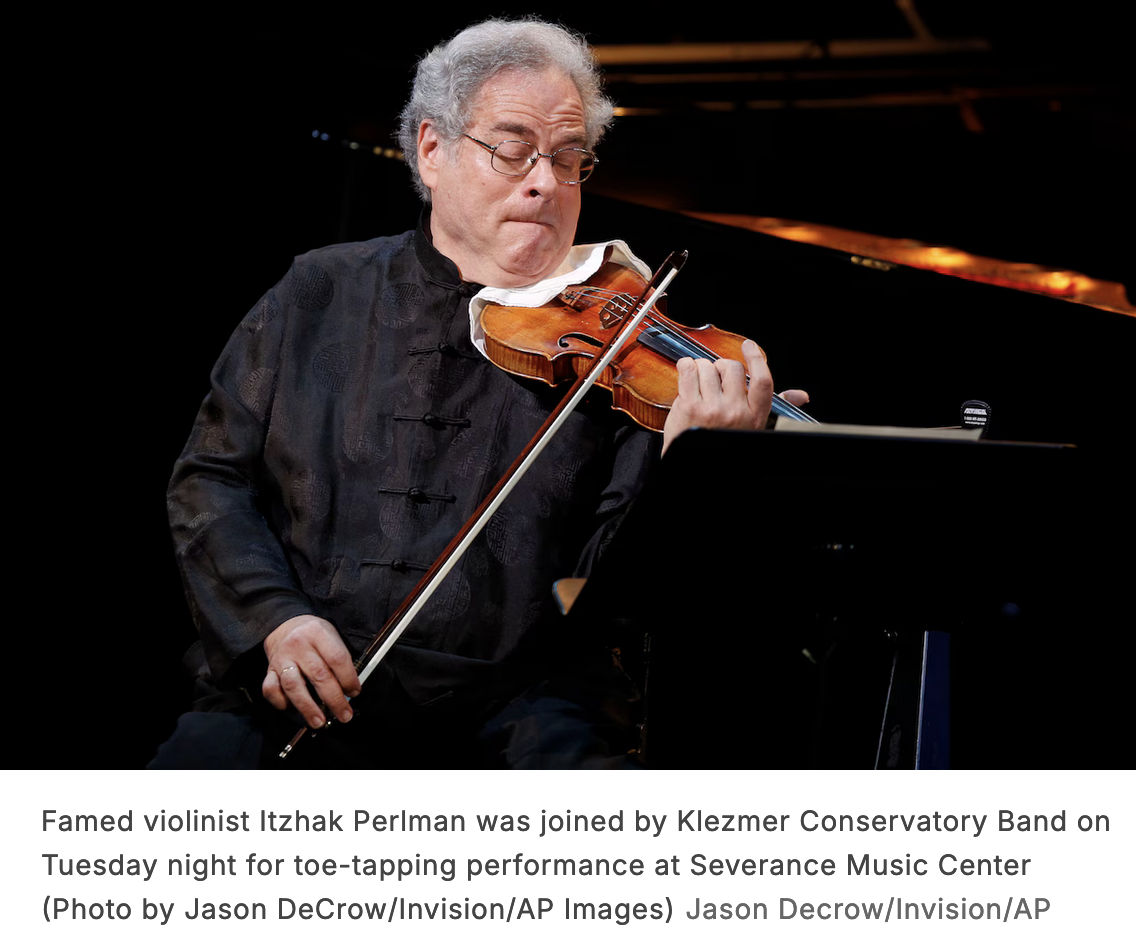by Stephanie Manning

CLEVELAND, Ohio — There’s a Yiddish saying that goes, “In the fiddler’s house, everyone dances.” Admittedly, in Severance Music Center on Tuesday night, April 8, it took some coaxing before a small but joyful group of people stood up, joined hands, and began snaking through the aisles.
Getting the audience on their feet is a trademark of Itzhak Perlman’s touring program “In the Fiddler’s House,” a celebration of traditional Jewish klezmer music. The violinist’s star power helped draw a large crowd to his Cleveland performance although he was far from the only one on stage. The result was a sunny, toe-tapping affair, despite some sound enhancement issues.
Joining Perlman were musicians from the Klezmer Conservatory Band, as well as from other trailblazing groups associated with the revival of the genre in the 1970s and ‘80s. Klezmer, which originated in the Jewish communities of Eastern Europe, had largely faded from prominence in the mid-20th century before new performers took up the mantle. Perlman documented his own connection to the music in an award-winning 1995 PBS special and album, which share the concert’s title.
Thirty years on, many of the same faces from that special are still going strong. Hankus Netsky, the evening’s music director and genial master of ceremonies, flexed his chops on piano and saxophone. And clarinetist Ilene Stahl’s connection with this music is as passionate as ever. Apart from bringing boundless energy to the upbeat numbers, she also traded bittersweet cadenzas with Perlman in wedding tunes like “Kale Bazetsn” (Seating the Bride) and “Firn di Mekhutonim Aheym” (Leading the In-Laws Home).
Although Perlman’s technique has become a bit strained as he approaches his 80th birthday, he still brings genuine pathos and joy to this style. But more importantly, it was often hard to hear him. He wasn’t the only one — the sound of Pete Rusherfsky’s tsimbl (hammered dulcimer) often disappeared despite the wealth of microphones around. Even brass instruments like trombone (Mark Hamilton) and trumpet (Mark Berney and Frank London) couldn’t help but sound diminished.
Smaller group numbers made this less of a problem. The gentle “Sholom Aleykhem” featured some beautiful solos from Andy Statman on the mandolin. He then switched to clarinet during a haytarma — a Crimean dance — where he spun out a virtuosic prelude.
Accordion player and vocalist Lorin Sklamberg gave an impassioned performance of the moving, wordless vocal melody in his own piece, “Nign.” Indeed, the numbers that involved singing were some of the most memorable of the night. “Simkhes Toyre Time” featured Sklamberg, Micheal Alpert, and Judy Bressler — who sported both a lovely, clear tone and a deft hand at the tambourine.
True, not everyone got up to join in on the fun during “Mekhuteneste Mayne,” when Bressler urged the audience to get into the aisles. But the smiles, claps, and cheers from those who stayed seated were equally genuine.
Published on ClevelandClassical.com April 14, 2025.
Click here for a printable copy of this article



